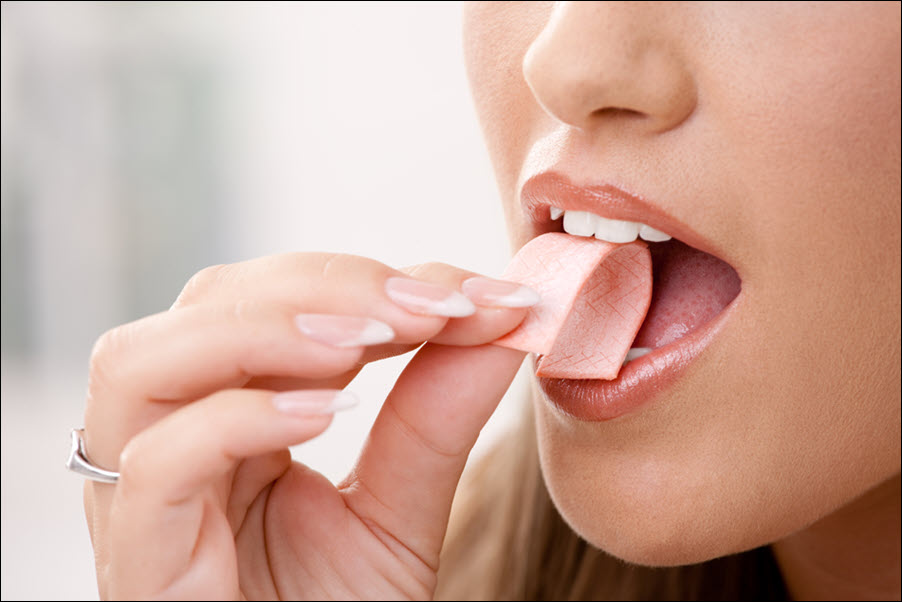Mouth breathing increases the risk of dental and oral health issues. Breathing through the mouth dries out the mouth and reduces saliva flow. Saliva protects teeth and gums by washing away bacteria and food particles. Reduced saliva increases plaque buildup, leading to cavities and gum disease. Breathing through your mouth also affects tooth alignment and jaw development, especially in children. Dry mouth increases the risk of bad breath and tooth sensitivity. Treating mouth breathing early improves dental health and overall comfort. Understanding the dental problems caused by mouth breathing helps prevent long-term complications. Let’s explore how mouth breathing affects oral health and how to prevent damage.
Increased Risk of Cavities
 Mouth breathing reduces saliva production, increasing the risk of cavities. Saliva protects teeth by washing away food particles and neutralizing acids. A dry mouth allows plaque and bacteria to stick to teeth. Plaque produces acid that weakens enamel and creates cavities. Without enough saliva, enamel becomes more vulnerable to decay. Cavities cause sensitivity to hot, cold, and sweet foods. Untreated cavities increase the risk of infection and tooth loss. Brushing and flossing daily reduce plaque buildup and cavity risk. Drinking water throughout the day improves saliva flow and strengthens enamel. Better saliva protection reduces cavity formation and improves tooth strength.
Mouth breathing reduces saliva production, increasing the risk of cavities. Saliva protects teeth by washing away food particles and neutralizing acids. A dry mouth allows plaque and bacteria to stick to teeth. Plaque produces acid that weakens enamel and creates cavities. Without enough saliva, enamel becomes more vulnerable to decay. Cavities cause sensitivity to hot, cold, and sweet foods. Untreated cavities increase the risk of infection and tooth loss. Brushing and flossing daily reduce plaque buildup and cavity risk. Drinking water throughout the day improves saliva flow and strengthens enamel. Better saliva protection reduces cavity formation and improves tooth strength.
Gum Disease and Inflammation
Mouth breathing increases the risk of gum disease (gingivitis and periodontitis). Dry gums become irritated and inflamed, increasing sensitivity and bleeding. Plaque buildup along the gumline worsens inflammation and deepens gum pockets. Untreated gum disease leads to gum recession and tooth loss. Reduced saliva flow weakens gum tissue and increases bacterial growth. Brushing, flossing, and using antibacterial mouthwash reduce plaque and improve gum health. Professional dental cleanings remove plaque and tartar buildup. Treating early gum inflammation prevents long-term gum damage and tooth loss. Healthier gums improve overall dental comfort and bite strength. Consistent care reduces gum inflammation and increases tooth stability.
Bad Breath (Halitosis)
 Mouth breathing increases dry mouth, which worsens bad breath. Saliva removes bacteria and food particles that cause odor. Reduced saliva flow allows bacteria to multiply, producing sulfur compounds that create bad breath. Dry mouth also increases plaque buildup, which worsens odor. Brushing and flossing daily remove bacteria and food debris from tooth surfaces. Antibacterial mouthwash reduces bacterial growth and improves breath freshness. Drinking water throughout the day increases saliva production and reduces dry mouth. Tongue cleaning removes odor-causing bacteria and improves freshness. Professional cleanings remove plaque and tartar buildup, reducing bad breath. Better oral moisture improves breath quality and overall comfort.
Mouth breathing increases dry mouth, which worsens bad breath. Saliva removes bacteria and food particles that cause odor. Reduced saliva flow allows bacteria to multiply, producing sulfur compounds that create bad breath. Dry mouth also increases plaque buildup, which worsens odor. Brushing and flossing daily remove bacteria and food debris from tooth surfaces. Antibacterial mouthwash reduces bacterial growth and improves breath freshness. Drinking water throughout the day increases saliva production and reduces dry mouth. Tongue cleaning removes odor-causing bacteria and improves freshness. Professional cleanings remove plaque and tartar buildup, reducing bad breath. Better oral moisture improves breath quality and overall comfort.
Misaligned Teeth and Poor Jaw Development
Chronic mouth breathing affects tooth alignment and jaw development. Breathing through the mouth causes the tongue to rest improperly in the lower jaw. Poor tongue positioning increases pressure on teeth, causing them to shift and crowd. Jaw misalignment increases the risk of bite problems and uneven tooth wear. Children who mouth breathe develop narrow dental arches and overbites. Orthodontic treatment with braces or aligners corrects misalignment and improves bite strength. Early intervention prevents long-term jaw and tooth alignment issues. Strengthening tongue position improves dental balance and alignment. Proper breathing techniques support healthier jaw and tooth development.
Tooth Sensitivity and Erosion
It also dries out the enamel and increases sensitivity. Without enough saliva, teeth lose their natural protective layer. Acid from plaque buildup weakens enamel and increases tooth sensitivity. Exposed enamel increases discomfort when eating hot, cold, and sweet foods. Fluoride treatments strengthen enamel and reduce sensitivity. Brushing with fluoride toothpaste protects enamel from acid erosion. Avoiding acidic foods and drinks reduces enamel weakening. Improved saliva flow increases enamel protection and strengthens tooth surfaces. Proper hydration supports natural enamel repair and reduces sensitivity. Stronger enamel improves chewing comfort and reduces long-term sensitivity.
Mouth Sores and Oral Infections
Dry mouth from mouth breathing increases the risk of mouth sores and infections. Reduced saliva weakens the mouth’s natural defense against bacteria and fungi. Bacteria growth increases the risk of gum infections and oral thrush. Mouth sores cause discomfort while eating and speaking. Antibacterial mouthwash reduces bacteria and improves gum health. Staying hydrated increases saliva production and reduces mouth dryness. Dental cleanings remove plaque and bacteria from hard-to-reach areas. Early treatment of mouth sores prevents complications and discomfort. Improved saliva flow strengthens the mouth’s natural healing process. Better moisture levels reduce the risk of oral infections and irritation.
Treatment and Prevention
Treating the cause of mouth breathing improves dental health. Allergies, nasal congestion, and sinus issues increase mouth breathing. Treating allergies and improving nasal airflow reduces mouth breathing frequency. Orthodontic treatment corrects misaligned teeth and improves jaw positioning. Breathing exercises strengthen nasal breathing and reduce dependency on mouth breathing. Dentists recommend custom mouth guards to improve tongue position and bite strength. Proper hydration and saliva-stimulating products improve oral moisture. Avoiding smoking and alcohol reduces dry mouth and gum inflammation. Regular dental checkups monitor gum and tooth health. Treating mouth breathing early improves long-term dental strength and comfort.
Mouth breathing increases the risk of cavities, gum disease, and tooth misalignment. Reduced saliva flow weakens enamel and increases plaque buildup. Chronic mouth breathing also affects jaw development and tooth alignment. Treating the underlying cause of mouth breathing reduces long-term dental problems. Brushing, flossing, and using antibacterial mouthwash improve plaque control and gum health. Professional dental cleanings remove tartar and strengthen enamel. Proper hydration and tongue positioning reduce dry mouth and improve bite alignment. Early treatment prevents serious complications and supports better oral health. Stronger teeth and healthier gums create a balanced, comfortable smile.
 Mint-flavored gum quickly freshens breath by masking odor. However, this effect is temporary and does not treat the root cause of halitosis. Gum cannot remove plaque, treat gum disease, or address systemic conditions contributing to bad breath. Patients should use gum as a short-term aid while maintaining brushing, flossing, and dental visits as long-term solutions. Recognizing the difference between masking and prevention ensures realistic expectations.
Mint-flavored gum quickly freshens breath by masking odor. However, this effect is temporary and does not treat the root cause of halitosis. Gum cannot remove plaque, treat gum disease, or address systemic conditions contributing to bad breath. Patients should use gum as a short-term aid while maintaining brushing, flossing, and dental visits as long-term solutions. Recognizing the difference between masking and prevention ensures realistic expectations.


 Mouth breathing reduces saliva production, increasing the risk of cavities. Saliva protects teeth by washing away food particles and neutralizing acids. A dry mouth allows plaque and bacteria to stick to teeth. Plaque produces acid that weakens enamel and creates cavities. Without enough saliva, enamel becomes more vulnerable to decay. Cavities cause sensitivity to hot, cold, and sweet foods.
Mouth breathing reduces saliva production, increasing the risk of cavities. Saliva protects teeth by washing away food particles and neutralizing acids. A dry mouth allows plaque and bacteria to stick to teeth. Plaque produces acid that weakens enamel and creates cavities. Without enough saliva, enamel becomes more vulnerable to decay. Cavities cause sensitivity to hot, cold, and sweet foods.  Mouth breathing increases dry mouth, which worsens bad breath. Saliva removes bacteria and food particles that cause odor. Reduced saliva flow allows bacteria to multiply, producing sulfur compounds that create bad breath. Dry mouth also increases plaque buildup, which worsens odor. Brushing and flossing daily remove bacteria and food debris from tooth surfaces. Antibacterial mouthwash reduces bacterial growth and improves breath freshness. Drinking water throughout the day increases saliva production and reduces dry mouth. Tongue cleaning removes odor-causing bacteria and improves freshness. Professional cleanings remove plaque and tartar buildup, reducing bad breath. Better oral moisture improves breath quality and overall comfort.
Mouth breathing increases dry mouth, which worsens bad breath. Saliva removes bacteria and food particles that cause odor. Reduced saliva flow allows bacteria to multiply, producing sulfur compounds that create bad breath. Dry mouth also increases plaque buildup, which worsens odor. Brushing and flossing daily remove bacteria and food debris from tooth surfaces. Antibacterial mouthwash reduces bacterial growth and improves breath freshness. Drinking water throughout the day increases saliva production and reduces dry mouth. Tongue cleaning removes odor-causing bacteria and improves freshness. Professional cleanings remove plaque and tartar buildup, reducing bad breath. Better oral moisture improves breath quality and overall comfort.